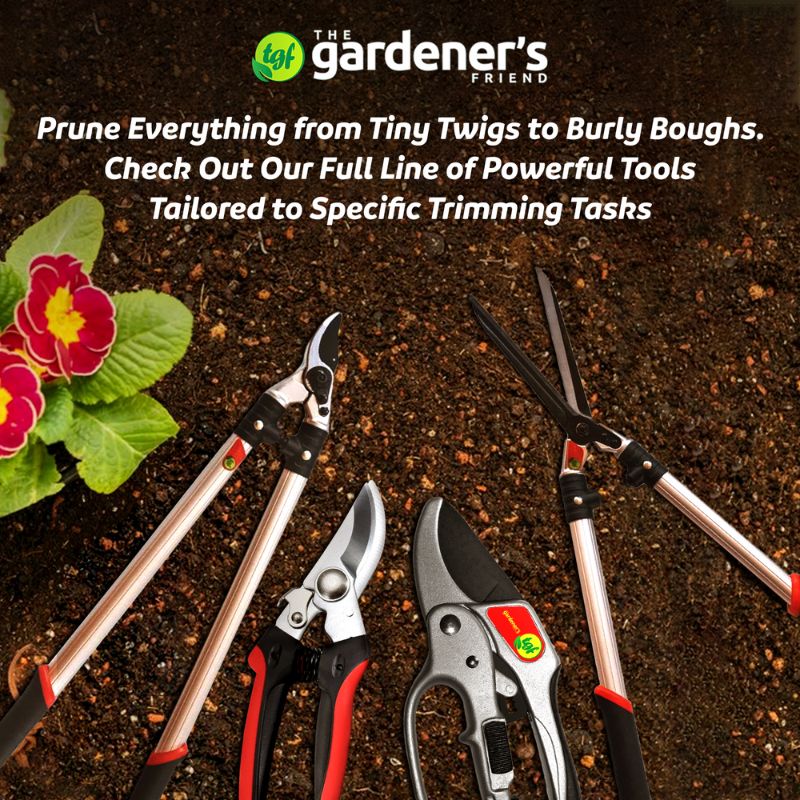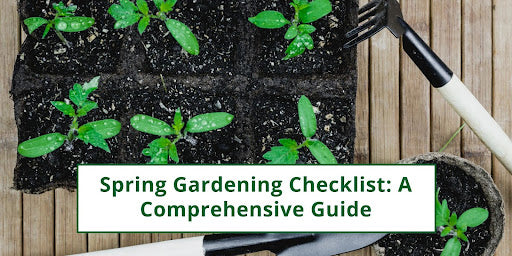Spring is a great time to refresh your garden and enjoy some outdoor time. But if you’re an elderly gardener or are experiencing joint stiffness, limited mobility, and low grip strength, it can feel more challenging than enjoyable.
The good news? It doesn’t have to be this way; with the right tools and a clear plan, you can have a beautiful garden without putting too much strain on your body.
This spring gardening checklist is custom-made for you, whether you’re an elderly gardener or just want to take things slow.
Let’s dive in.
Plan Before You Dig
Before you start digging your soil, take a walk around your garden and look for areas that need a clean up and ones that need new plants.
You can use your phone’s camera to remember what you see. This helps you focus your efforts on the most important parts of your garden.
Gear Up for Comfort
Traditional gardening tools can be hard on your hands, especially if you have mobility problems. What you can do is get gardening tools that have wide, soft handles and are easy to hold.
Also, consider tools made of a lightweight material, such as plastic or aluminum. These are easier to hold and work with, especially during long gardening sessions.
Clear and Clean
Cleanup is a major part of getting your garden ready for new growth, but it doesn’t have to happen all at once or in one day.
- Pick up old leaves
- Trim dead stems
- Remove anything messy or unhealthy for your plants
Even a few minutes of light cleaning can transform your garden’s aesthetics and set the stage for new growth.
Soil Prep Without the Struggle
A healthy garden soil sets the stage for healthy plant growth. The good thing is that you don’t need to dig deep into the soil.
It often means spreading a thin layer of compost over your garden beds; it’ll give your plants enough nutrients.
To prevent weed growth and keep your soil moist, you can also use mulch (A layer of bark, straw, and leaves). This also means you:
- Don’t have to water the soil frequently
- And pull out weeds as often
Work With Raised Beds and Containers
Raised garden beds and containers can be a game-changer if you have trouble kneeling. With a raised bed, you can take care of your plants while standing or sitting on a chair. This way, you don't have to put stress on your back as well.
Choose Easy Grow Plants
Some plants need more attention and resources than others. Growing plants that require less maintenance takes some burden off your shoulders.
For instance, tulips and crocuses come back every spring on their own. And herbs like mint and basil are easier to manage.
Once you plant them, many of these plants do just fine with regular watering and some sunlight.
Water Wisely
Carrying water cans and hoses to every corner of a garden can be overwhelming, especially if you have a large area to take care of.
A better option is to use a drip irrigation system. By using soaker hoses, you can let water get into the base of your plants through the soil automatically.
Alternatively, you can add a timer to your hose, so your plants get watered automatically at a specified time every day.
You May Also Like: Benefits of Pruning Apple Trees in Summer
Manage Weeds Gently
Weeding can be a tough task, especially for gardeners with hand or back issues. Thankfully, you don’t have to weed your entire garden at once.
Just stay ahead of the big ones. Use a long-handled weeder to pull them off without bending your back.
In addition, you can use mulch to cover the soil and block new weed growth. This means less work for you as the season progresses.
Control Pests With a Plan
Checking on your plants once every week is a must, but you don’t have to get on your knees to look for plant damage and spot bugs.
A smarter approach would be to use a long handle with a small mirror to inspect your plants thoroughly. If you spot any insects or holes in your leaves, simply spraying soapy water will be enough to remove them.
Harvest and Trim Without Strain
One of the most rewarding and enjoyable parts of spring gardening is picking fresh vegetables, herbs, and flowers.
You want to use specialized gardening pruners or scissors with spring-loaded designs; they’ll make the task way easier and more effective.
Welcome Helpful Insects
Bees and butterflies can help plant growth by spreading pollen. How do you invite them? By planting flowers like lavender and daisies.
You can also place a bowl of water with stones in it, giving these helpful insects a safe place to land and drink.
Frequently Asked Questions
How to Prepare Your Garden for Spring?
Start by clearing debris and adding compost. Gather necessary tools and plan ahead. Water with soaker hoses to make your work easier and more effective.
When to Start Spring Gardening?
Start after the last frost, when temperatures are above the freezing point. Depending on your region, this can be late march to early april.
What Fruits to Plant in Spring?
Spring is great for planting strawberries, raspberries, blueberries, and apple/pear trees. Consider using raised beds or containers for easier access to the soil.
What Grows Fastest in Spring?
Spinach, radish, lettuce, and peas tend to grow quickly in the cool spring conditions. You can expect to harvest them within weeks of plantation.
Conclusion
Spring gardening doesn't have to be stressful and hectic. With the right tools and effective planning, you can turn it into an incredibly rewarding activity.
Start by focusing on feel-good tasks and take it slow. Pick tools and techniques that make your work comfortable, not difficult.
For instance, instead of watering your plants with a can, use a drip irrigation system. You can use soaker hoses to water plant roots automatically instead of carrying a watering can to every part of the garden.
Read More: How to Use Pruning Shears (Step-by-Step)


